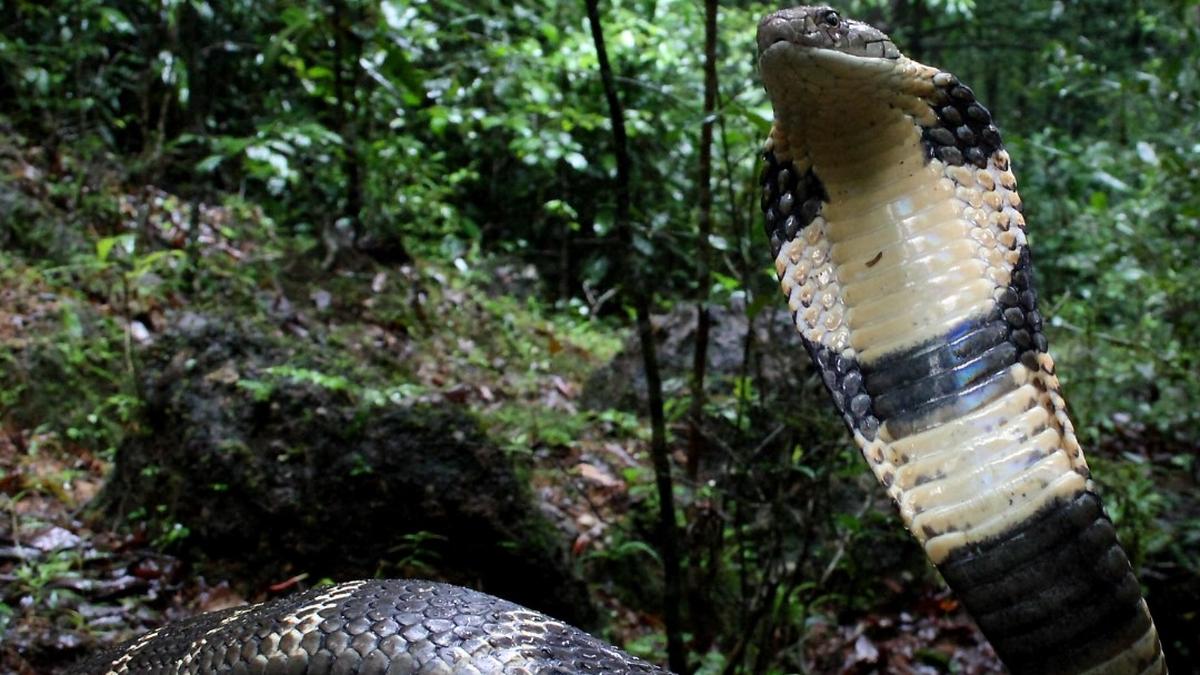
‘I wanted every Kannadiga to feel proud of the king cobra’ Premium
The Hindu
“You can die within 20 minutes if you get bitten,” says the founder-director of the Kālinga Foundation (kaalinga sarpa is Kannada for King Cobra) located in the Agumbe rainforests in the Malnad region of the Central Western Ghats. Shankar was lucky. “The snake didn’t inject enough venom because I reacted quickly… Didn’t give him a chance to hold onto me and pump it in,” he says. But even the minuscule amount of venom resulted in terrible swelling and pain. Snake bite was treated symptomatically, “like COVID before we had the vaccine,” he says.
It all started with a snake bite back in 2005. Dr. P. Gowri Shankar was rescuing a king cobra when the ten-foot-long snake suddenly struck him.
“You can die within 20 minutes if you get bitten,” says the founder-director of the Kālinga Foundation (kaalinga sarpa is Kannada for King Cobra) located in the Agumbe rainforests in the Malnad region of the Central Western Ghats. Shankar was lucky. “The snake didn’t inject enough venom because I reacted quickly… Didn’t give him a chance to hold onto me and pump it in,” he says. But even the minuscule amount of venom resulted in terrible swelling and pain. Snake bite was treated symptomatically, “like COVID before we had the vaccine,” he says.
While there is a polyvalent antivenom available in India, which is frequently used to treat bites by the “big four” snakes in the country — Russell’s viper, saw-scaled viper, common krait, and Indian cobra — it doesn’t work against the bite of a king cobra. But since, till recently, it was assumed that the king cobra was a single species widely distributed through many parts of Asia, he turned to the few vials of antivenom from Thailand that he had in his possession, hoping that it would work against the bite.
“But my body did not accept it. I couldn’t breathe, and blisters were everywhere,” recalls Shankar, who finally did not pursue this line of treatment. “Though we had a slight idea that Thai king cobra antivenom did not work on Indian king cobras, it was proved by this incident,” he says.
Shankar’s near-death experience got him wondering why the antivenom did not work since the species of king cobra from India was thought to be the same as the one in Thailand (besides the Indian subcontinent, king cobras are found in Southeast Asia and southern China).
“That is when I started thinking they may be two different species. So I decided to do my PhD in this,” says Shankar, who registered for his PhD in 2013, spending the next decade or so closely examining the morphology and genetics of these snakes. This research confirmed his hunch: there was more than one species of king cobra. In fact, he and his colleagues discovered that the king cobra is a complex of at least four distinct species, overturning a 186-year-long belief that they belonged to a single species.
Since 1836, when the Danish naturalist Theodore Edward Cantor first described the animal, the king cobra was considered a single species. There was, however, one scientist who had his doubts ‒ the Sri Lankan palaeontologist Paulus Edward Pieris Deraniyagala. According to Shankar, in the early 1960s, Deraniyagala suggested that there were several subspecies of the animal, but “the scientific community did not accept it since there was no proper evidence,” he says.

The Tamil Nadu government will set up a Centre of Excellence with an Artificial Intelligence (AI) lab and will offer this to startups and other small players with a minimal operation fee, said Kumar Jayanth, Additional Chief Secretary, Department of Information Technology and Digital Services, Government of Tamil Nadu.










